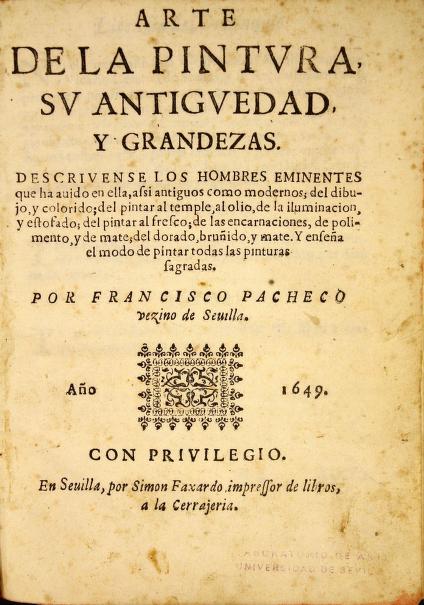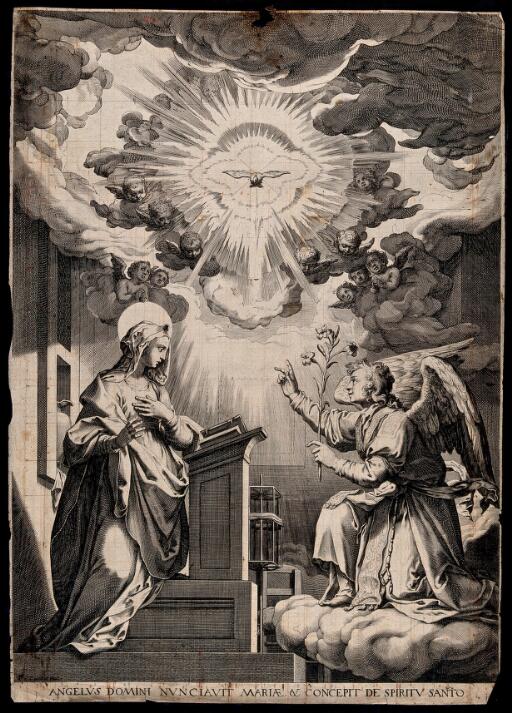
Frostispiece of Pacheco, El Arte de la pintura (1649), Seville, Simon Faxardo, impressor de libros, a la Cerrajeria
Indicating some of the “licenses” used by painters when representing the biblical passage about the Annunciation – and giving them the possibility to not make the same “mistakes” from that time onwards -, Pacheco mentions the print made by Nicolas Batrizet, originally a copie of Michelangelo Buonarroti’s artwork. According to the author, Michelangelo inadequately put the Virgin on her feet as if she wanted to flee from the angel, which was also with excessive nudity.
“And, although what has been said will suffice, for the sake of clarity we will point out some of the licenses used by painters in this history, so that they may be avoided from now on, as observed in the greatest of men. Michelangelo and Titian, who stamped them, the former put the Virgin on her feet as if she wanted to flee from the angel […] and […] the angel very naked”
“Y, aunque, lo dicho será bastante, para mayor claridad advertiremos algumas licencias usadas de pintores en esta historia, porque se escusen de aquí adelante, observadas en los mayores hombres. Micael Angel y Ticiano, que las dexaron estampadas, el primero puso a la Virgen en pie como que quiere huir del ángel […] y, […] al ángel muy desnudo”


Pacheco (1990), 594, n. 13-15;



